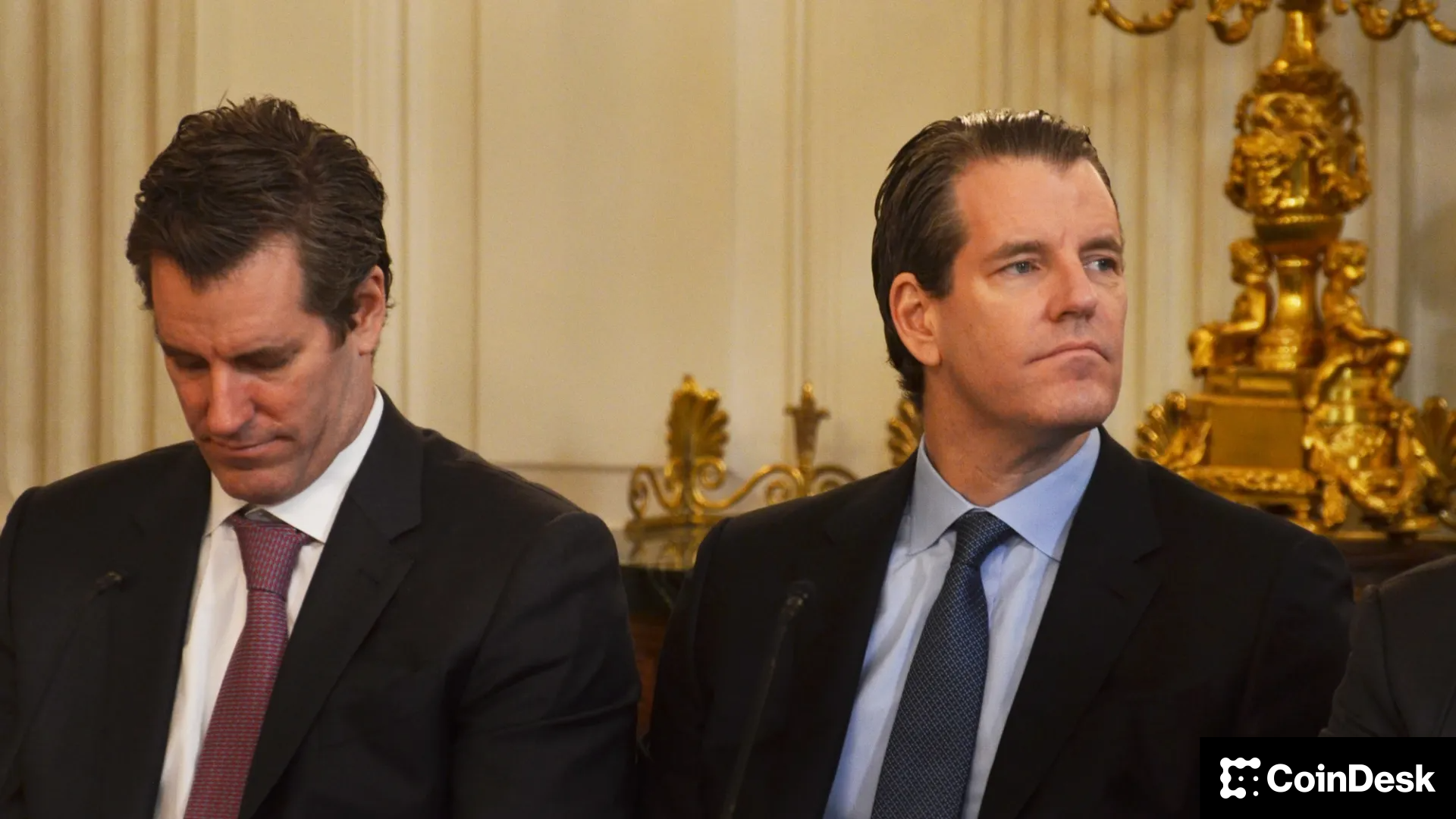Uncategorized
Crypto Sell-Off Worsens With XRP, SOL, DOGE Down 20%, Traders See More Pain Ahead of US Open

A crypto market sell-off went from bad to brutal in European morning hours Monday as bitcoin pierced the $75,000 level — extending losses on major tokens to nearly 20%.
Tokens XRP, solana (SOL), and dogecoin (DOGE) plunged over 5% in the hours ahead of the European open, erasing tens of billions in market capitalization, driven by a cascade of macroeconomic uncertainty and aggressive liquidations that neared $1 billion.
The broad-based CoinDesk 20 (CD20) index, which tracks the largest tokens, slumped 12%, signaling a widespread risk-off sentiment gripping the sector.
XRP and SOL led the decline, each nosediving more than 20% in the past 24 hours and breaking under critical support levels. XRP, trading at $1.70, has slipped below its critical 200-day moving average — a key technical support level — raising fears of further downside toward $1.75.
SOL, meanwhile, dropped under $100, breaching its 50-day moving average and marking a 64% retreat from its all-time high. DOGE, the meme coin darling, wasn’t spared, tumbling 20% to $0.13, as a CoinDesk analysis noted earlier Monday.
President Donald Trump’s recent 25% tariffs on imports from Canada and Mexico, coupled with a doubled 20% levy on China, have sparked retaliatory threats.
China is mulling front-loaded stimulus to counter these measures, adding to market jitters, as reported. Investors are fleeing risk assets for safe havens like gold, the Japanese yen and the Australian dollar.
Meanwhile, traders expect the market decline to continue through the Asian day ahead of the U.S. open
“Historically, crypto markets tend to front-run stock markets over the weekend, and this morning’s Asia market declines seem to have reinforced this belief,” Jeff Mei, COO at BTSE, told CoinDesk in a Telegram message. “We expect crypto markets to dip once US markets open.”
“As to whether or not they’ll recover depends on which large countries are able to secure short-term tariff delays or deals this week. Thus far, Vietnam, Cambodia, and Taiwan have already pledged to lower their own tariffs and/or increase US investment in exchange for relief, but we would need a larger trading partner like Japan or China to do so to restore confidence and certainty in the markets,” Mei added.
Augustine Fan, head of insights at SignalPlus, said current price action was displaying bear market behaviour.
“All the signs suggest that macro markets are now in ‘bear market’ mode, rallies are to be sold, and investors will be forced to accept this new reality against the long-term wagers being made,” Fan said in a Telegram message. “The market will likely continue to frustrate and shake investor confidence for quite a while longer.”
“Over the longer term, charts might argue that BTC has broken out against global equities and is overdue to catch up with spot gold, but catalysts appear to be fleeting at this time and risk management (ie. lower prices) will likely dominate until global stops melting down,” Fan ended.
Business
Crypto Trading Firm Keyrock Buys Luxembourg’s Turing Capital in Asset Management Push

Crypto trading firm Keyrock said it’s expanding into asset and wealth management by acquiring Turing Capital, a Luxembourg-registered alternative investment fund manager.
The deal, announced on Tuesday, marks the launch of Keyrock’s Asset and Wealth Management division, a new business unit dedicated to institutional clients and private investors.
Keyrock, founded in Brussels, Belgium and best known for its work in market making, options and OTC trading, said it will fold Turing Capital’s investment strategies and Luxembourg fund management structure into its wider platform. The division will be led by Turing Capital co-founder Jorge Schnura, who joins Keyrock’s executive committee as president of the unit.
The company said the expansion will allow it to provide services across the full lifecycle of digital assets, from liquidity provision to long-term investment strategies. «In the near future, all assets will live onchain,» Schnura said, noting that the merger positions the group to capture opportunities as traditional financial products migrate to blockchain rails.
Keyrock has also applied for regulatory approval under the EU’s crypto framework MiCA through a filing with Liechtenstein’s financial regulator. If approved, the firm plans to offer portfolio management and advisory services, aiming to compete directly with traditional asset managers as well as crypto-native players.
«Today’s launch sets the stage for our longer-term ambition: bringing asset management on-chain in a way that truly meets institutional standards,» Keyrock CSO Juan David Mendieta said in a statement.
Read more: Stablecoin Payments Projected to Top $1T Annually by 2030, Market Maker Keyrock Says
Business
Crypto Trading Firm Keyrock Buys Luxembourg’s Turing Capital in Asset Management Push

Crypto trading firm Keyrock said it’s expanding into asset and wealth management by acquiring Turing Capital, a Luxembourg-registered alternative investment fund manager.
The deal, announced on Tuesday, marks the launch of Keyrock’s Asset and Wealth Management division, a new business unit dedicated to institutional clients and private investors.
Keyrock, founded in Brussels, Belgium and best known for its work in market making, options and OTC trading, said it will fold Turing Capital’s investment strategies and Luxembourg fund management structure into its wider platform. The division will be led by Turing Capital co-founder Jorge Schnura, who joins Keyrock’s executive committee as president of the unit.
The company said the expansion will allow it to provide services across the full lifecycle of digital assets, from liquidity provision to long-term investment strategies. «In the near future, all assets will live onchain,» Schnura said, noting that the merger positions the group to capture opportunities as traditional financial products migrate to blockchain rails.
Keyrock has also applied for regulatory approval under the EU’s crypto framework MiCA through a filing with Liechtenstein’s financial regulator. If approved, the firm plans to offer portfolio management and advisory services, aiming to compete directly with traditional asset managers as well as crypto-native players.
«Today’s launch sets the stage for our longer-term ambition: bringing asset management on-chain in a way that truly meets institutional standards,» Keyrock CSO Juan David Mendieta said in a statement.
Read more: Stablecoin Payments Projected to Top $1T Annually by 2030, Market Maker Keyrock Says
Business
Gemini Shares Slide 6%, Extending Post-IPO Slump to 24%

Gemini Space Station (GEMI), the crypto exchange founded by Cameron and Tyler Winklevoss, has seen its shares tumble by more than 20% since listing on the Nasdaq last Friday.
The stock is down around 6% on Tuesday, trading at $30.42, and has dropped nearly 24% over the past week. The sharp decline follows an initial surge after the company raised $425 million in its IPO, pricing shares at $28 and valuing the firm at $3.3 billion before trading began.
On its first day, GEMI spiked to $45.89 before closing at $32 — a 14% premium to its offer price. But since hitting that high, shares have plunged more than 34%, erasing most of the early enthusiasm from public market investors.
The broader crypto equity market has remained more stable. Coinbase (COIN), the largest U.S. crypto exchange, is flat over the past week. Robinhood (HOOD), which derives part of its revenue from crypto, is down 3%. Token issuer Circle (CRCL), on the other hand, is up 13% over the same period.
Part of the pressure on Gemini’s stock may stem from its financials. The company posted a $283 million net loss in the first half of 2025, following a $159 million loss in all of 2024. Despite raising fresh capital, the numbers suggest the business is still far from turning a profit.
Compass Point analyst Ed Engel noted that GEMI is currently trading at 26 times its annualized first-half revenue. That multiple — often used to gauge whether a stock is expensive — means investors are paying 26 dollars for every dollar the company is expected to generate in sales this year. For a loss-making company in a volatile sector, that’s a steep price, and could be fueling investor skepticism.
-

 Business11 месяцев ago
Business11 месяцев ago3 Ways to make your business presentation more relatable
-

 Fashion11 месяцев ago
Fashion11 месяцев agoAccording to Dior Couture, this taboo fashion accessory is back
-

 Entertainment11 месяцев ago
Entertainment11 месяцев ago10 Artists who retired from music and made a comeback
-

 Entertainment11 месяцев ago
Entertainment11 месяцев ago\’Better Call Saul\’ has been renewed for a fourth season
-

 Entertainment11 месяцев ago
Entertainment11 месяцев agoNew Season 8 Walking Dead trailer flashes forward in time
-

 Business11 месяцев ago
Business11 месяцев ago15 Habits that could be hurting your business relationships
-

 Entertainment11 месяцев ago
Entertainment11 месяцев agoMeet Superman\’s grandfather in new trailer for Krypton
-

 Entertainment11 месяцев ago
Entertainment11 месяцев agoDisney\’s live-action Aladdin finally finds its stars




